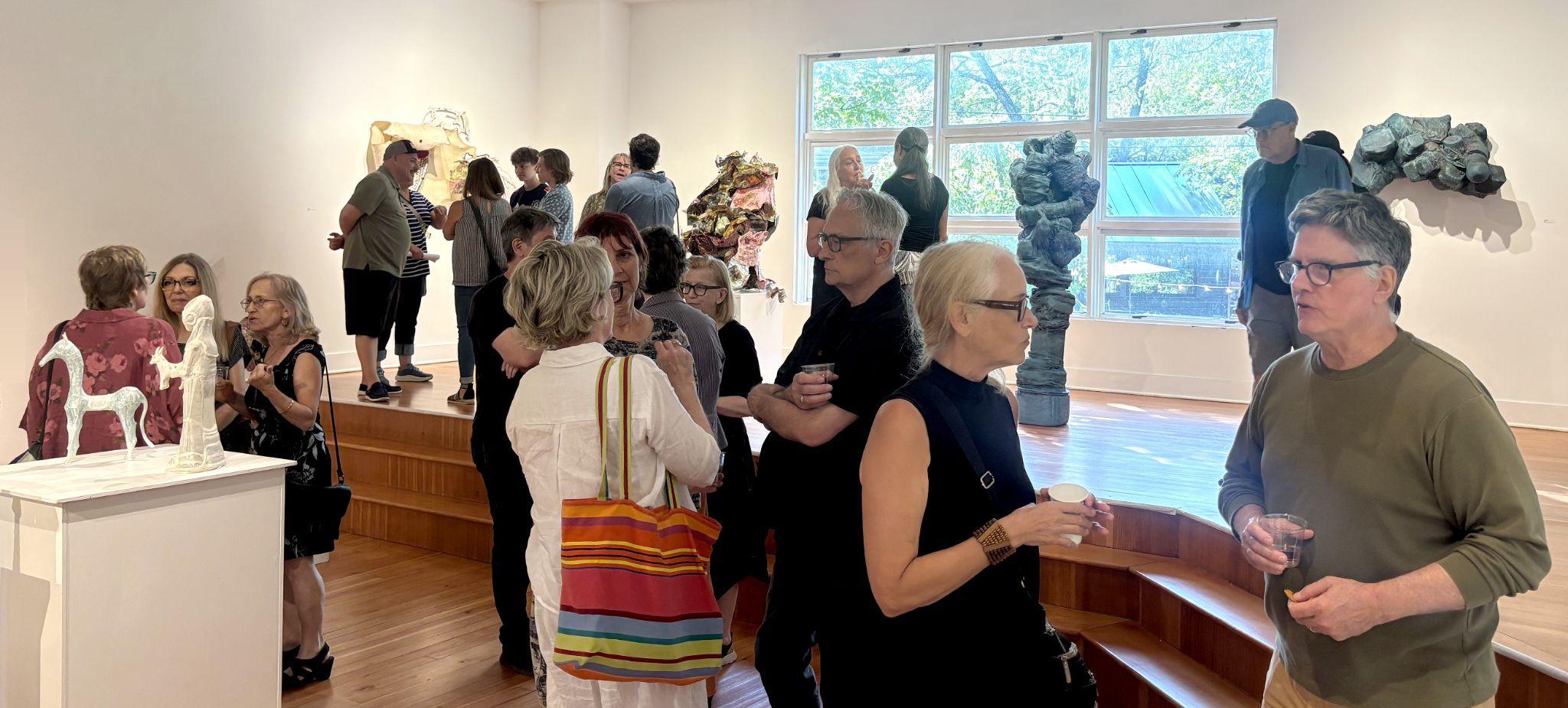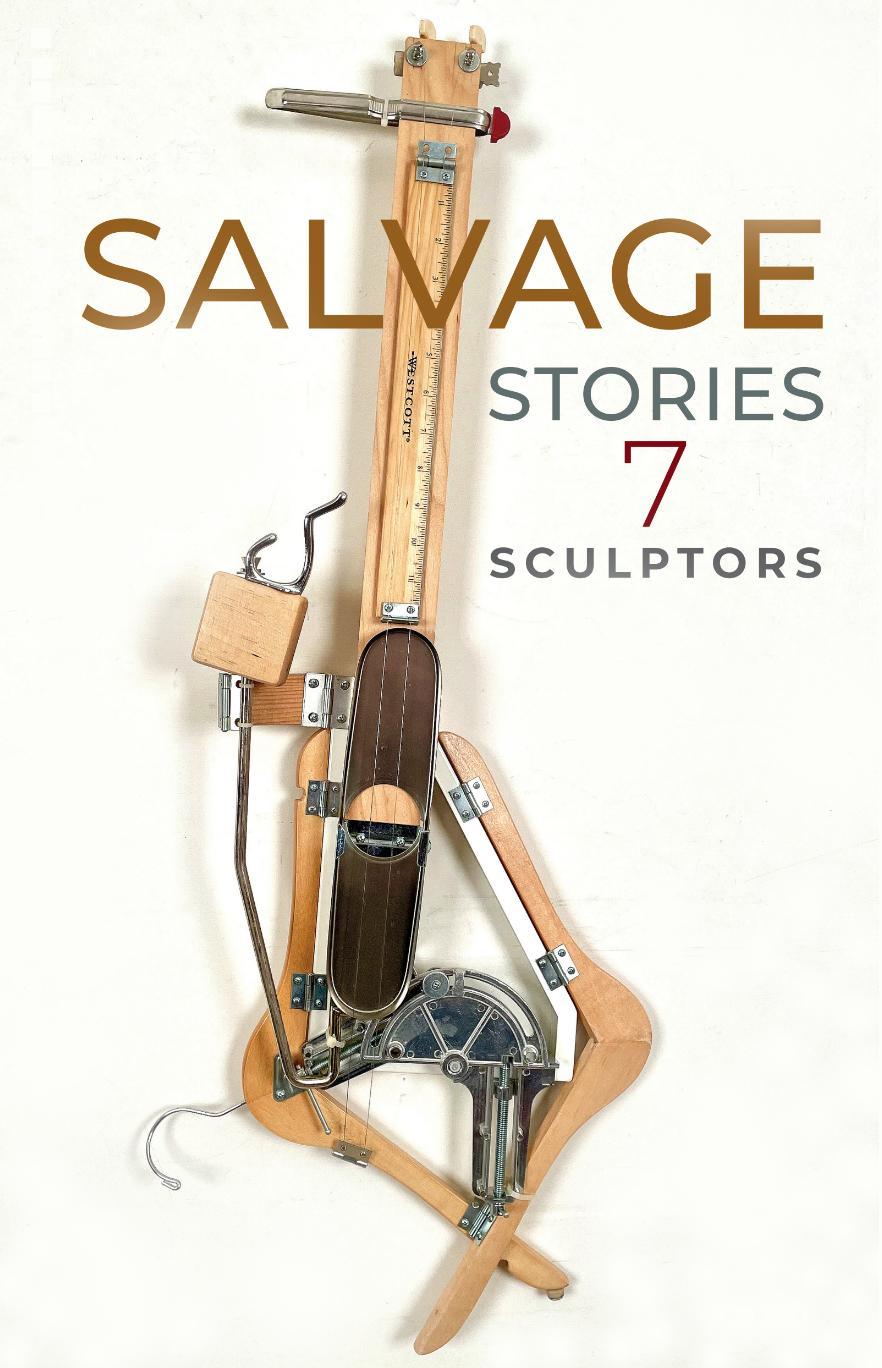
Exhibition design, banners and visual concept: Susanna Ronner Graphic Design
Catalogue design: Woodstock Byrdcliffe Guild


Exhibition design, banners and visual concept: Susanna Ronner Graphic Design
Catalogue design: Woodstock Byrdcliffe Guild
August 2 - September 14, 2025


The artists featured in Salvaged Stories transform the mundane trash of contemporary society into sculpture that ranges from emotional resonance to historical allusion, grounded earthiness, and musical innuendo. Though their decision to repurpose discarded detritus connects to the environmental movements of our time, more significantly, these artists have chosen upcycled materials because of the compelling textures, colors, and indeed also mystique of the items’ utilitarian origins. This show is an exhibition of contrasts between the “high” and “low” of society’s creations, the destruction of consumerism and discoveries of art, the ugly and beautiful, the serious and playful. With skillful twists of form, manipulation of abstraction, and subtle – and sometimes even quite direct – references to the figure, these sculptors bring the long-forgotten stories of human refuse into the poignant personal stories of the artist, and in the process, turn the ashes of our manmade world into poignant works of art.
Using everything from lint to rusty pipes, Eric Banks creates unified raw constructions of hope within decay, and humor within life’s tortured complexities.
Ken Butler is a musician-artist. Recombining disassociated found objects, he constructs – and often performs on – innovative musical instruments, transforming our useless waste into objects of whimsy, joy, and rhythmic musicality.
In Carol Diamond’s pieces, found street “junk” of metal, glass, concrete, fabric and wire mesh express tensions that synthesize into a vision of unity, repair and wholeness.
Bonny Leibowitz produces objects, installations and paintings utilizing manmade and organic materials in ways that often disguise their origin, blurring the boundaries between the manufactured and the natural.
Referencing ancient artifacts, Shari Mendelson’s glistening vessels, made from plastic bottles, are so elegant and authentic that their humble origins are all but impossible to believe.
With repurposed cardboard boxes, concrete and sand particles, Mark Van Wagner’s sculptures suggest archeological, architectural, and anthropomorphic metaphors of conflict and ruin protected within a shield of humor and restoration.
Fragility and healing characterize Shivani Patel’s sculptures and wall pieces. Assembled from scavenged metals, umbrella and found rods, old jewelry, and other sundry things, they evoke an intimate poetry of twisting costume design, and the ornate details of ancient religious architecture, reflecting her family’s Hindu-Indian heritage.
Ruin, reconstruction, and rebirth come into play in the spontaneous processes of these 7 artists – processes open to subconscious unveilings – and which present as enigmatic expressions of the rich mutability of materials.
ALICE ZINNES and CAROL DIAMOND, 2025

Eric Banks | Chief | 2025 | repurposed materials, fabric, paint | 14 x 9 x 7 in
Eric Banks was born and raised in NewYork City and currently lives and works in the Hudson Valley. His 40-year career as an artist has focused primarily on painting, but has recently evolved to include three-dimensional works, many of which function as wall reliefs. Banks attended the Hoffberger School of Painting at Maryland Institute College ofArt where he studied primarily under Grace Hartigan and Sal Scarpitta. He spent many years working as an art teacher for underserved middle and high school students in Brooklyn, NYbefore retiring to the Hudson Valley five years ago.
Throughout my body of work, I have been concerned with the power of materiality to invoke a “primal unconscious state. My paintings and wall reliefs are an attempt to wed the primacy and simplicity of forms and shapes to a process of thinking and emotion. My more recent sculptural work is enveloped in a “skin” of fabrics that are treated with ash, lint and acrylic, pointing to the paradox of forms caught between the living and the dead, and the ongoing life cycle of materials. Ultimately, I see my work as a means of advocating for freedom, dignity, and the rejection of tyranny and dehumanization.



Ken Butler studied viola briefly as a child and maintained an interest in music while studying visual arts in France, at Colorado College, and Portland State University where he completed his MFAin painting.
He has been featured in exhibitions and performances worldwide including The Stedelijk Museum inAmsterdam,The Prada Foundation in Venice (as part of the “Art or Sound” exhibition at the Venice Biennale in 2014),The State Hermitage Museum in St. Petersburg, New MusicAmerica (twice), Mass MoCA, andThe Kitchen,The Brooklyn Museum, Lincoln Center andThe Metropolitan Museum in NewYork City as well as in Canada, SouthAmerica, Thailand, and Japan.
His works have been reviewed inThe NewYorkTimes,The Village Voice, Artforum, Smithsonian, and Sculpture Magazine and have been featured on PBS, CNN, MTV, and NBC, including a live appearance onTheTonight Show. Awards include fellowships from the OregonArts Commission, the NewYork Foundation for theArts, the National Endowment for theArts, and the Pollock/Krasner Foundation. He won first prize in the 2016 international Guthman Musical Instrument Competition at GeorgiaTech University. Butler has performed with John Zorn, LaurieAnderson, David VanTieghem, Butch Morris,The Soldier String Quartet, Matt Darriau's ParadoxTrio,The Tonight Show Band, andThe Master Gnawa musicians of Morocco. His CD, Voices ofAnxious Objects is onTzadik records.
Contemporary urban life is a bewildering collage of multiple images, ideas, sounds, and objects in a constant state of flux as information overload becomes the touchstone of our age.As we move from the mechanical to the electronic, this churning mass chews up and spits out material with re-assigned priorities and updates.The resulting detritus is a living corpse - a random and chaotic body of juxtaposed and deconstructed items and associations. From this storehouse of forsaken objects and hardware I, the urban bricoleur, further dismantle and reassemble the consumer society into assemblages in the form of musical instrument/objects, and then coax them to sing for their supper.

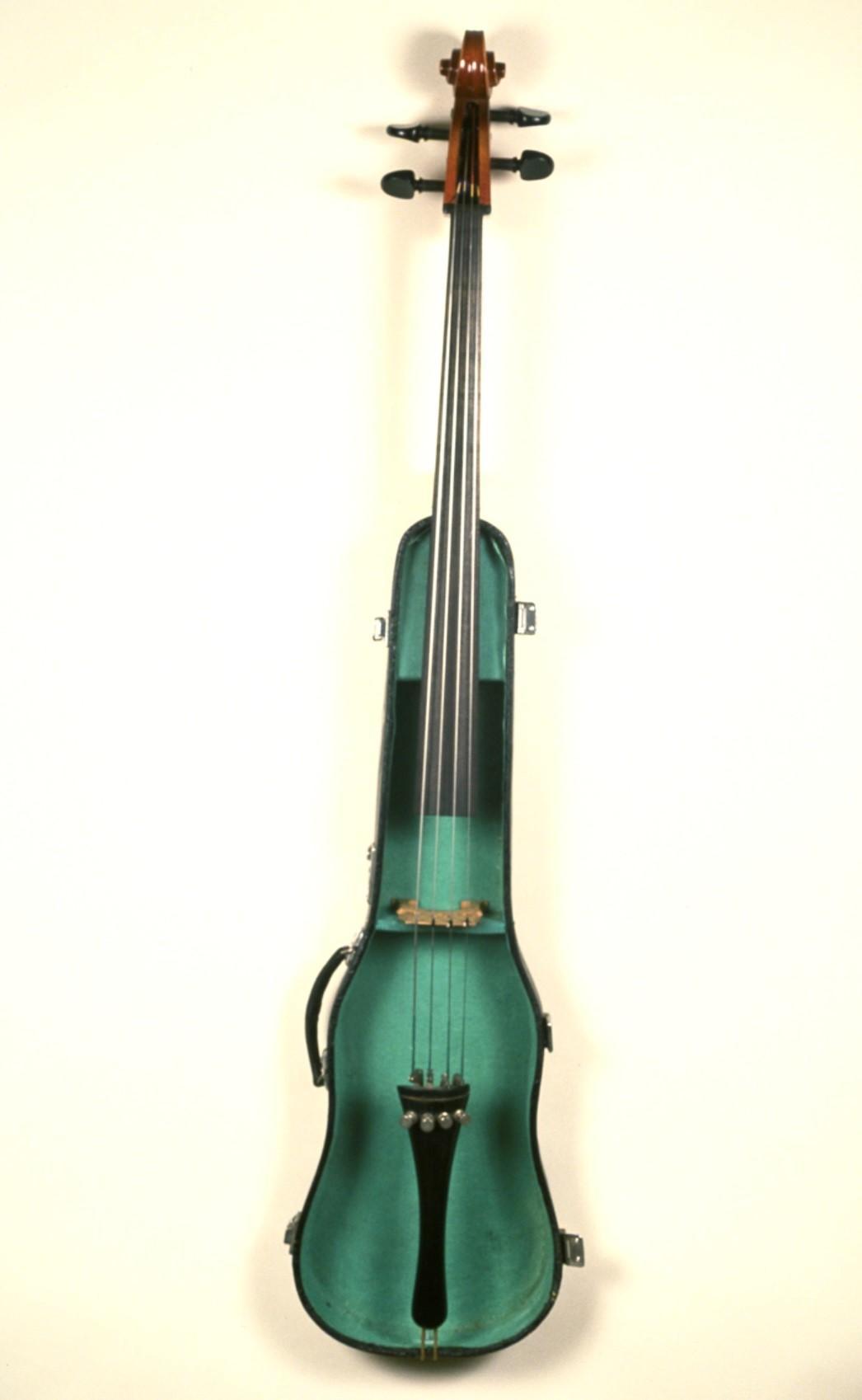
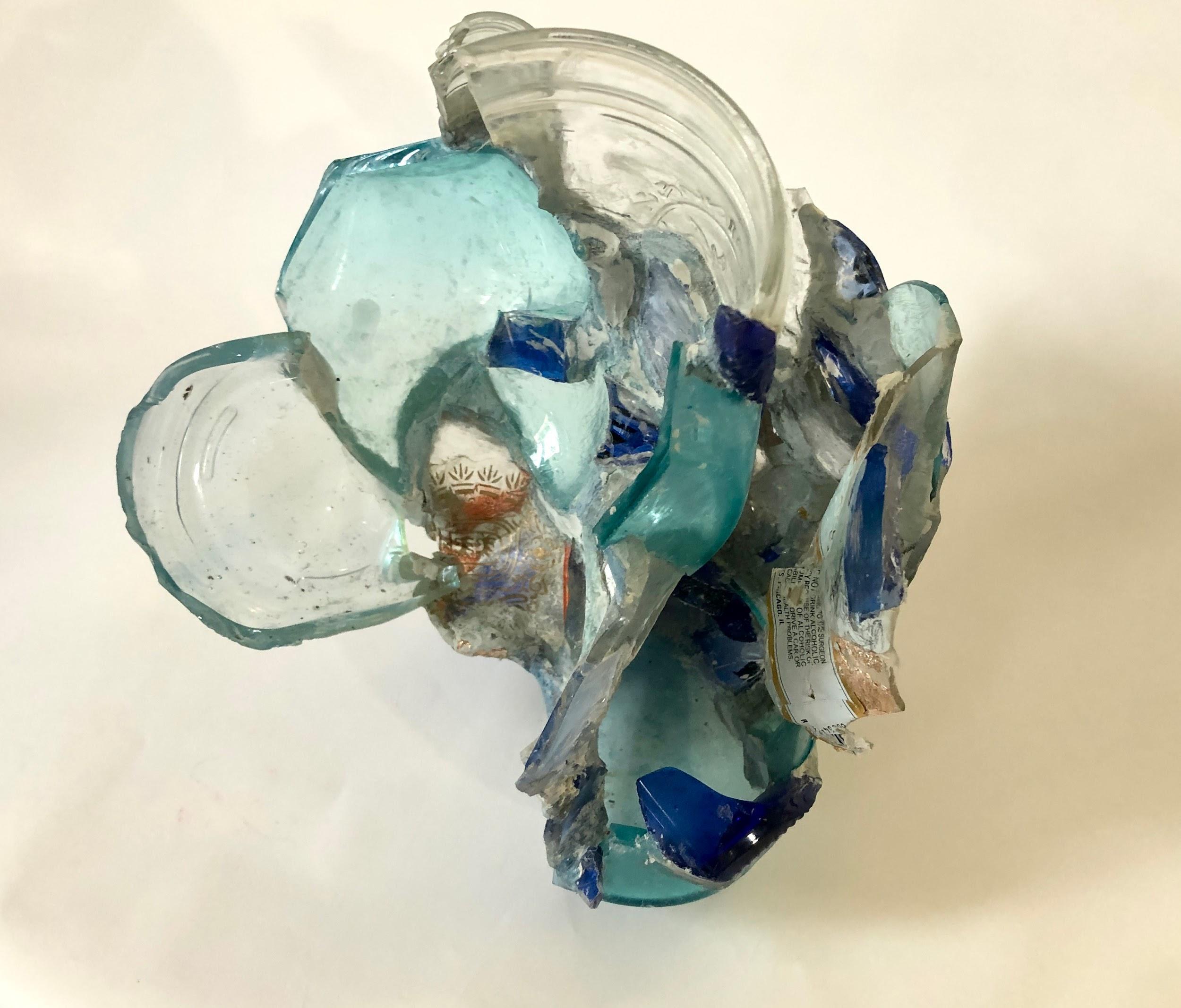

Born and raised in Cleveland, Ohio Diamond received a B.F.A. in Painting from Cornell University and studied at the NewYork Studio School. She is a tenured adjunct professor at Pratt Pratt Institute and teaches Graphic Design at CUNY City College ofTechnology.
Recent show venues include Zürcher Salon, Harlem Sculpture Park, Equity Gallery, Harlem Sculpture Park, Lockwood Gallery, and the Painting Center, NYC. Her artwork is included in public and private collections, including the Portland, Oregon Museum ofArt.
Diamond was awarded a Purchase Prize from theAmericanAcademy ofArts and Letters’Invitational Exhibition, two grants from the Pratt Institute Professional Development Fund, and the NationalAcademy Museum Edwin Palmer Prize. Her work has been featured in Hyperallergic,Too MuchArt, the ManhattanTimes, Painting Perceptions, and the PelhamArt Center. Her art writing and reviews are published inArt Critical, Painters on Painting,Two Coats of Paint, and Delicious Line.
My sculptures recombine discarded materials found on my neighborhood streets. I bend metal, twist fabric, and model with concrete.Autobiographical, feminist layers play with concepts of beauty and push back at stereotypes. Both dark humor and optimism play a role in the making process.Trained in painting, drawing and mixed media, I have worked professionally inAntiquities Restoration, repairing Greek vases, Chinese ritual Bronzes, and other objects. My work is characterized by a sensitivity to the life of materials, surface, historical archetypes, and the passing of time.



Bonny Leibowitz’s solo exhibitions includeThe MAC, Dallas,TX,TheArt Gallery at Collin College, Plano,TX.,Terrain Dallas,TX., Baugh Center for the VisualArts at Mary Hardin-Baylor University, BeltonTX., No.4 Studio Gallery in Brooklyn, NY,The Neon Heater in Findlay, OH., Forum Gallery, Houston, NY, Liliana Bloch Gallery in Dallas,TX,Art Cube Gallery in Laguna Beach, CA,The Museum ofArt, Midwestern State University in Wichita Falls,TX. and Cohn Drennan Contemporary in Dallas,TX. Her work has been included in numerous group exhibitions, most recently; Stories ofThe Post-Natural in Tivoli, NYandAComplexity of Joys and at MAPSpace, Port Chester, NY. Originally from Philadelphia. Leibowitz lives in Dallas,TX. where she maintains her studio practice.
My work acts to deconstruct historical notions and perceptions of nature, asking questions such as What is nature? and What is nature now?The installations are entangled with the history of painting and sculpture, and with current ideas of Post-Naturalism: that nature is no longer separate from human culture and technology and that our understanding of the "natural" world is influenced by human intervention, a complex hybrid of the natural and the human-made. In these works and installations, synthetic materials masquerade as natural, and the natural as synthetic. Branches and painted structures mimic a tree carried about in a cart, collapsing romantic attitudes that natural resources are there for the taking, ever abundant, exposing the realities of the climate crisis.
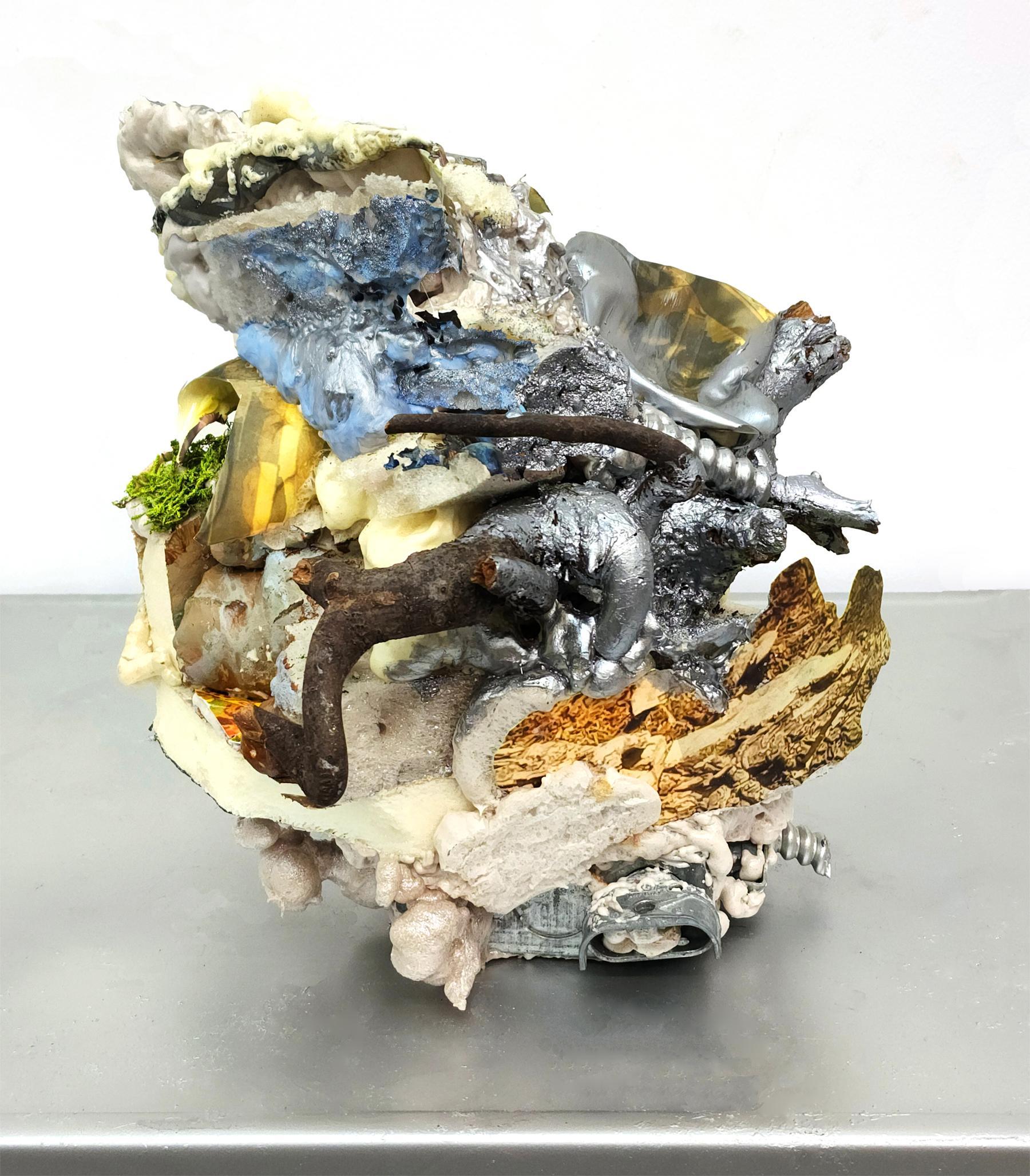
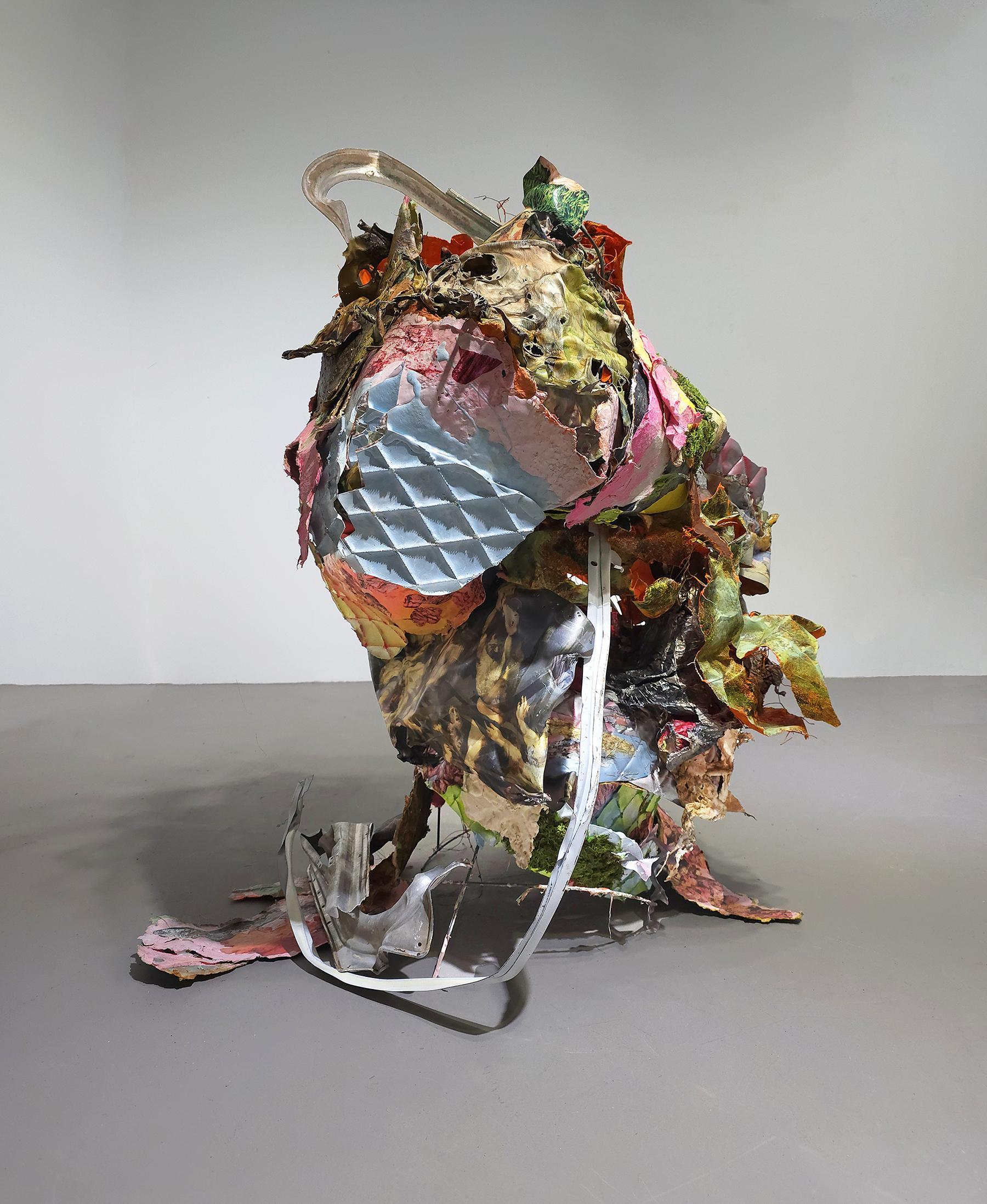

Shari Mendelson lives and works in Brooklyn and upstate NY. She has received a Guggenheim Fellowship,APollock-Krasner Foundation Grant, and 4 NewYork Foundation for theArts Fellowships. Museum collections include The MFABoston,The MFAHouston, andThe RISD Museum. She holds a BFAfromArizona State University and an MFAfrom SUNYNew Paltz. In the past few years Mendelson has had solo exhibitions atTibor de Nagy Gallery in NYC and Pamela Salisbury Gallery in Hudson, NY.
For the past 14 years I have been making sculptures that reference ancient art and are constructed from recycled plastic bottles. My influences include ancient Mediterranean and Near Eastern votive figures, tomb models, animal sculptures, vessels, and hybrid animal/vessel sculptures. I love these works for their visual beauty, for their visceral connection to the past, and for their timeless themes that depict a common humanity across cultures.Through these pieces, I learn about the history, customs, and religious practices of the past. I learn about materials and techniques and about early forms of individual craft and “mass” production.
Conceptually, I’m interested in our understanding of ancient works and cultures, our shifting notions of value, and the environmental impact of our contemporary throw- away culture. Formally, my interest is in the exploration of structure, form, scale, texture, color, light, and transformation.
| Four Vessels with Exoskeleton (blue) | 2017 | Repurposed plastic, hot glue, acrylic polymer, resin, metal, mica | 40 x 11 x 10 in
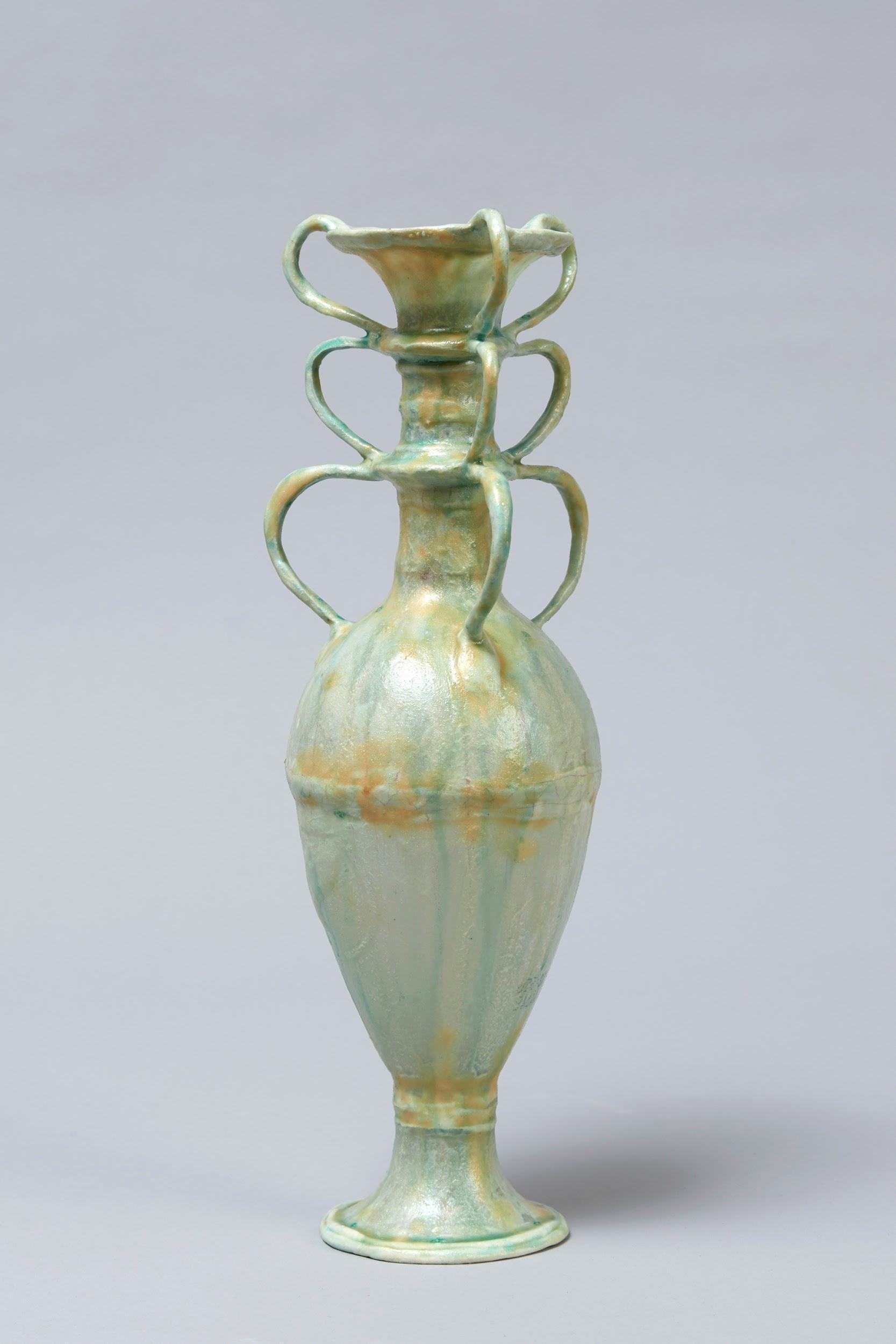



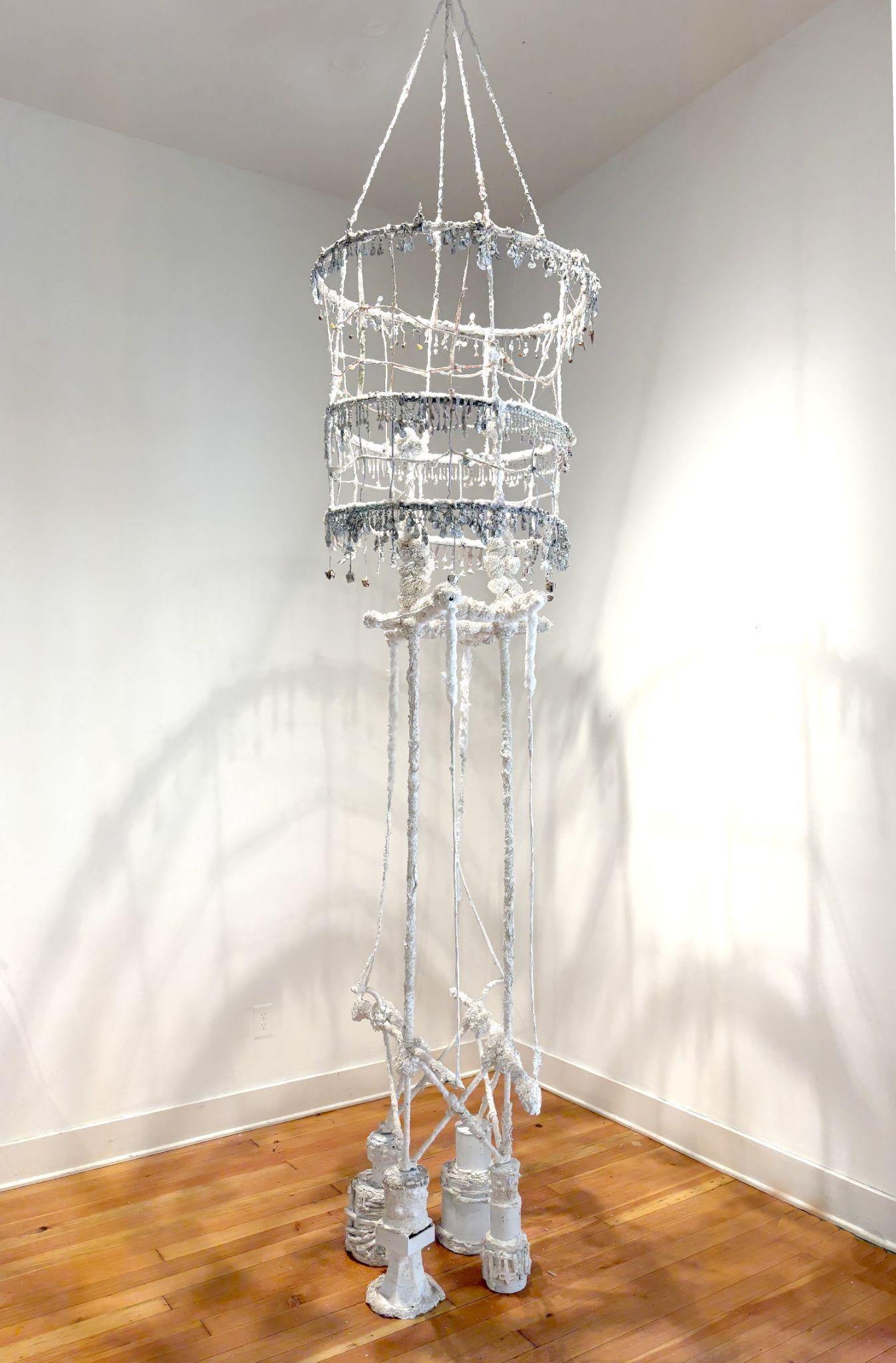
Shivani Patel is a Queens-based artist who transforms found materials into elaborate sculptures and installations. Originally from the Midwest, she earned a BFAin Painting with a minor in Ceramics from Michigan State University before spending two years substitute teaching and exploring welding. She later pursued an MFAin Painting at CranbrookAcademy ofArt, where she focused on material and sculptural studies. Her artistic path has taken her from Chicago—where she co-created Milanajuhui, an interactive installation exploring the senses, food, and community—toThe Gambia and Michigan before settling in Ridgewood, NewYork. For the past three years, her Ridgewood studio has been a hub of experimentation, reflecting her engagement with transformation and assemblage. She has participated in group exhibitions in NewYork City, showcasing her evolving sculptural practice in gallery settings.
The images I've submitted showcase a journey of creating intricate pieces that evolve gradually in my studio. Each piece is a laborious and experimental endeavor, crafted with found materials,forming structures that grow organically over time. I approach this process with a blend of intense focus during some months and allowing the pieces to breathe and evolve naturally in others.The foundations of these structures are rooted in small material and structure studies, slowly expanding into architectural environments. Utilizing found objects and textiles, subtly altered through paints and other processes, the pieces become dynamic compositions.They serve not only as 3D structures relating to the body but also as architectural entities, inviting viewers to engage both physically and conceptually. In the midst of this creative journey, I move the work so that the pieces transform into portals,inviting contemplation of something beyond the tangible.They hold space, allowing viewers to see through and navigate around them, creating a unique dialogue between the artwork, the observer, and the surrounding environment.



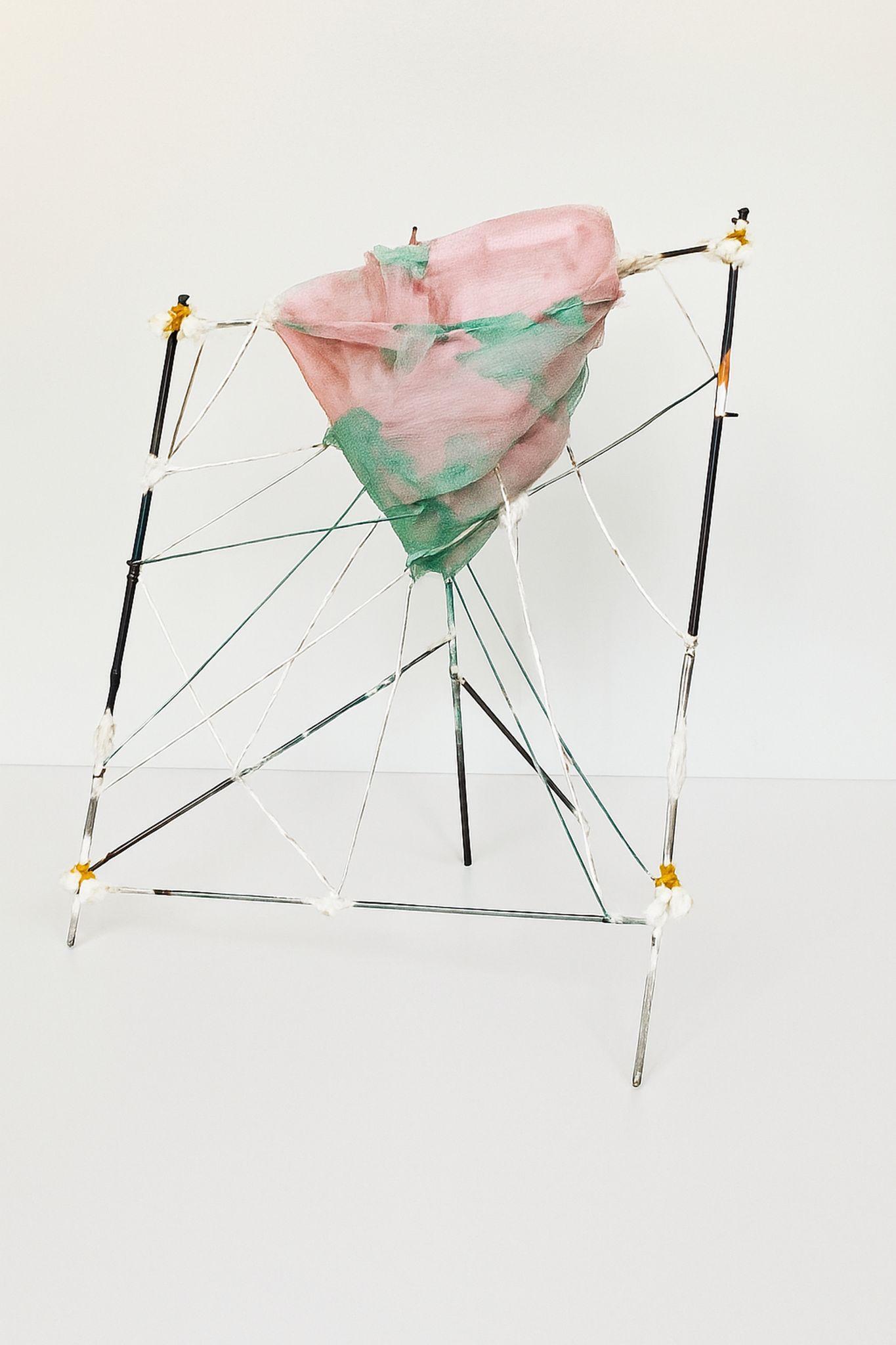

Mark Van Wagner received his Bachelor of Fine Arts degree from the School of the Art Institute of Chicago and studied Art History and Urban Planning at Colorado College. He has exhibited in numerous venues across the U.S. including the Long Island Biennial at the Heckscher Museum (Huntington, NY), 57W57 (New York, NY), 325 Project Space (Queens, NY), Marquee Projects (Bellport, NY), Providence Art Center (Providence, RI), Proto Gallery (Hoboken, NJ), Jamestown Art Center (Jamestown, RI), Elisa Contemporary Art (Riverdale, NY), and Nancy Lurie Gallery (Chicago, IL). His media coverage includes articles in Artnet.com, Artsy.net, Artdaily.org, the Chicago Tribune, HamptonsArtHub.com, The Long Island Advance, Boulder Daily Camera and NPR radio, among others. His work is included in many private and public collections throughout the United States and Europe including the Rockford Art Museum (Rockford, IL), Capital One Corporate Collection (Melville, NewYork),The Weill Cornell Medical Center (NewYork, NY) and the Sunneziel Meggen Corporate Collection (Meggen, Switzerland). The artist currently lives and works on Long Island in the village of Bellport, NY.
In combining movement with stillness, Mark Van Wagner’s artworks reference and combine various archeological, architectural, anthropomorphic characteristics, and various investigations of the inner and outer landscape. His sculptures often depict moments of impact and reverberations of force. The implications of conflict and ruin are present but so are humor and restoration, providing a sense of intimacy and introspection for the embodied subject.
Over the years, Van Wagner has collected natural sand from around the world and combines this substance along with flotsam and pigmented sand onto his layered-relief sculptures. In the exploration of applying mixed-media/ assemblage into his art- work, he has recognized sand to be the most literal medium to capture material decomposition - its essence defining impermanence related to time, place and gross matter. Thick and thin spontaneous-gestural applications of glue adhesives and gesso are sprinkled with innumerable sand particles and debris over manipulated cardboard boxes. By reassembling the sand back into a concrete substance and onto his humble armatures of repurposed cardboard boxes his work playfully reminds us of life’s cycles.
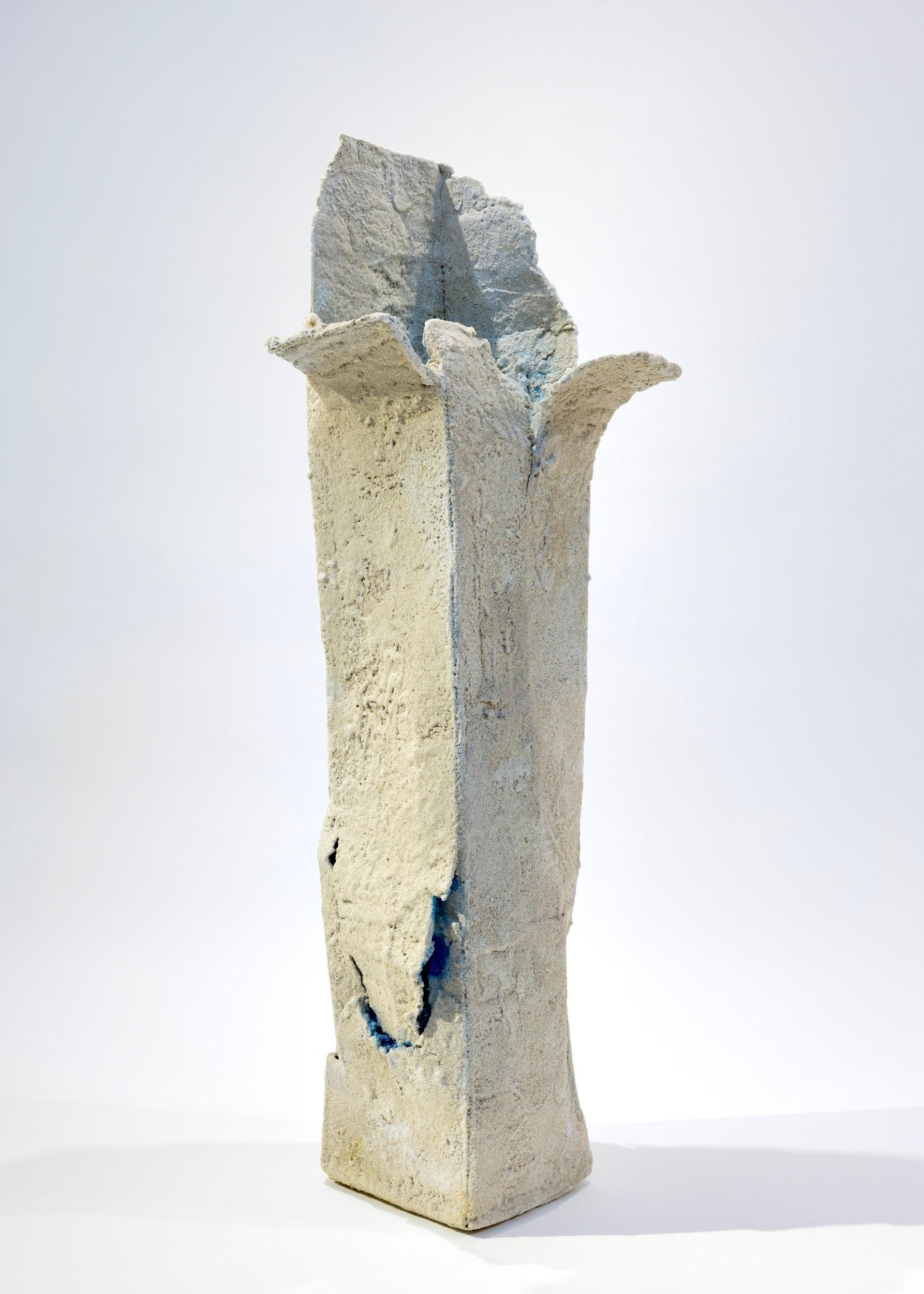





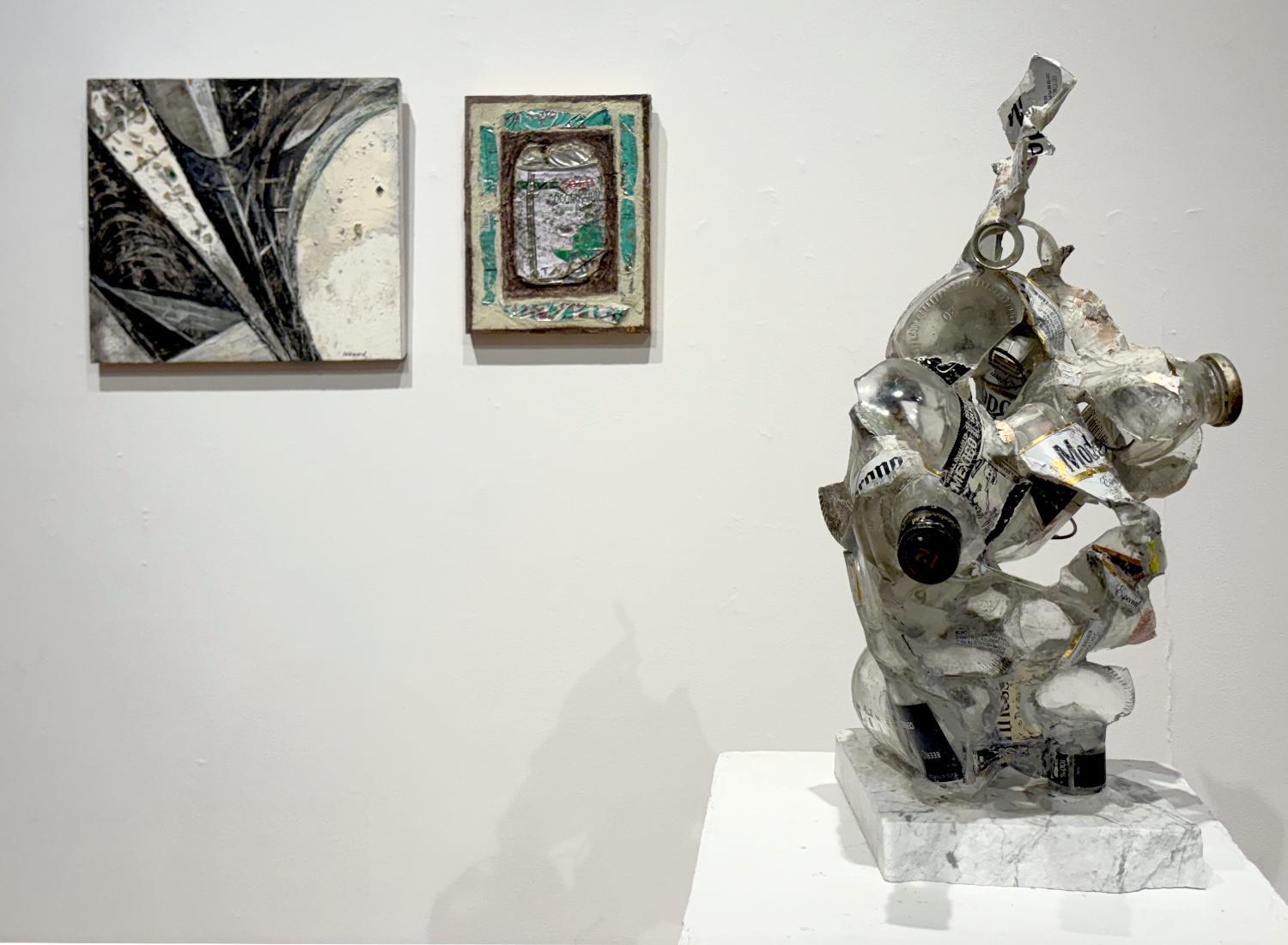






Alice Zinnes has had seven solo exhibitions in NYC, including at Causey Contemporary FineArt, Janet Kurnatowski Gallery,Tribes Gallery, andTheArt Center at Queens College, CUNY, and solo shows upstate NYat theAlliance Gallery (Narrowsburg) and CANO (Oneonta), as well as been included in many group exhibitions. Her work has been reviewed in The NY Times, NY Newsday, NY Arts Magazine, Art New England, The Queens Tribune, Revolt Magazine, Art News, The Indypendent, Abstract Art Online and From The Mayor’s Doorstep. She has twice been interviewed on NPR’s affiliate station, WJFF. She has received awards from the NationalAcademy of Design, and residencies from the VCCA, and Cummington Community for theArts. Her blog, @Entropvisions, of art exhibition and studio visit reviews, has been running for more than three years. Zinnes received her BAinArt History from Swarthmore College and MFAin Painting from Queens College, CUNY, as well as attended the NYStudio School for three years. She is a professor atThe Pratt Institute, and taught for many years at NYC College ofTechnology, CUNY (Brooklyn).
Zinnes has been an environmentalist since a second-grade draught in NYC awakened her interest, and in high school was president of the Ecology Club. From 2008-2014, she was at the center of the burgeoning anti-fracking movement, organizing at ExitArt the first major anti-fracking art exhibition and panel in NYC (resulting in the first mainstream NYC article written about fracking), numerous art benefits for new grassroots organizations, rallies, presentations, etc.
Not illustrations or literal translations, my art transforms ancient myths to mysterious worlds where the boundaries between underworld and waking earth are traversable, terror coexists with joy, and loss yields to renewal. My art pieces, inspired by poetry, fiction, and most recently mythology, are quiet landscape narratives in the guise of abstract explorations. Emotional tensions are transformed into forms emerging from light and dark, suggestions of figure, animal and birdlike images in space. These paintings suggest that the boundaries between underworld and waking earth are traversable, that terror coexists with joy, and that loss must always yield to renewal. In them, the very sky descends to occupy the ground as fog, then rises back to its rightful place; tunnels simultaneously lead downward to a dark center and offer an opening and escape to the bright air above. Beginning with myths, I hope to create epic spaces where the world at its least understandable is made concrete.
For years I painted the landscape of rural northeastern Pennsylvania, and that landscape space is in my bones and blood. Now, rather than suggesting the light and space of an actual motif, my landscapes are cast deep in the rich colors of myth and poetry – the language and pictures we create to understand the world at its least understandable.
Carol Diamond is an artist and educator based in NewYork City. Her current body of work focuses on found materials based hand-built sculpture.Awards include a Purchase Prize from theAmerican Academy ofArts and Letters and the NationalAcademy Museum Edwin Palmer Prize. Her art writing and reviews are published inArt Critical, Painters on Painting,Two Coats of Paint, and Delicious Line. Carol Diamond’s artwork is included in public and private collections, including the Portland, Oregon Museum ofArt.



